
Poster used in March on Washington
Courtesy of the Library of Congress
Short Term Impact
After the Brown case was won, its purpose became effective quickly.
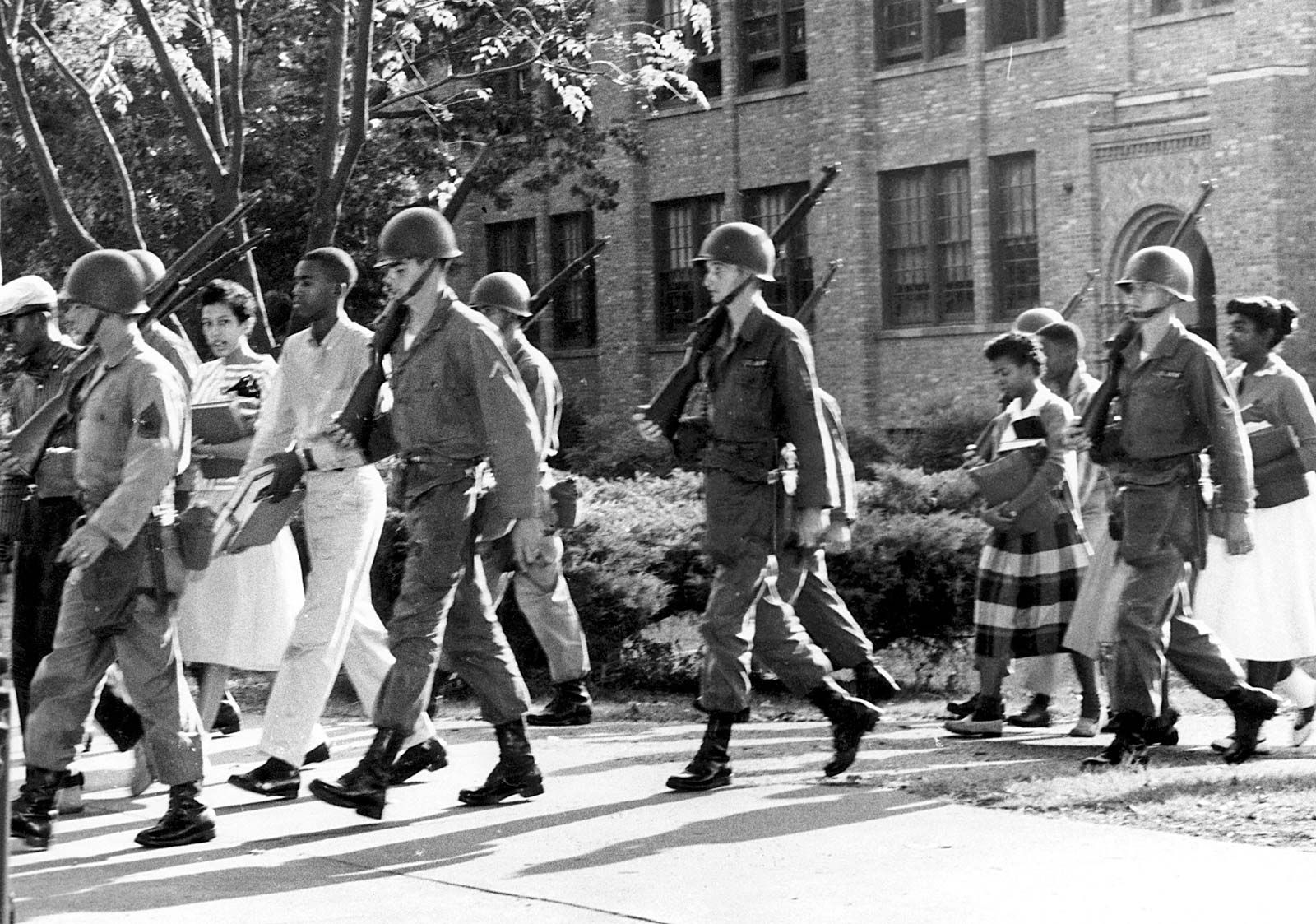
The Little Rock Nine being escorted by the National Guard to Little Rock Central High School, Arkansas, 1957.
Courtesy of CSU Archive
Melba Pattillo, Ernest Green, Elizabeth Eckford, Minnijean Brown, Terrence Roberts, Carlotta Walls, Jefferson Thomas, Gloria Ray, and Thelma Mothershed, otherwise known as the Little Rock Nine, were the first to take this initiative in 1957.
A woman named Daisy Bates led the NAACP’s campaign to desegregate public schools in Little Rock and met with the nine before heading to Central High School. Upon arrival, the governor of Arkansas, Orval Faubus, had the state National Guard prevent the nine from entering the doors to "preserve law and order." This caused an uproar of attacks against the Little Rock Nine and to combat the blocks from angry mobs and the guards, President Eisenhower sent federal troops to safely escort them inside.
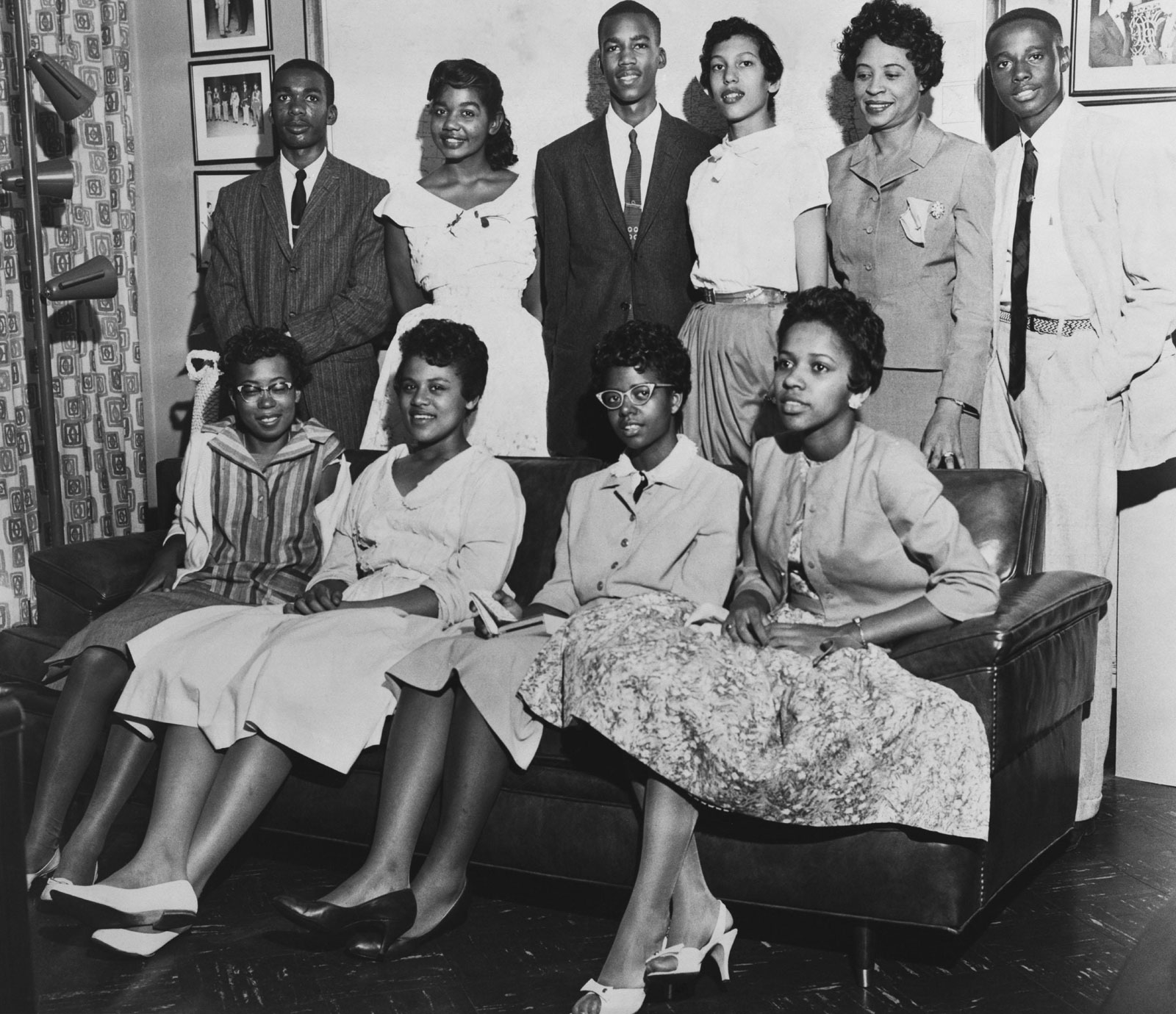
Daisy Bates and the Little Rock Nine
Courtesy of the Library of Congress

Governor Wallace blocking the entrance to the University of Alabama from two African-American students
Courtesy of the Library of Congress
In another location, Vivian Malone and James Hood, two colored college students, were to attend the University of Alabama in 1963. However, the governor at the time, George Wallace, stood in front of the door of the Foster Auditorium, physically preventing their entrance.
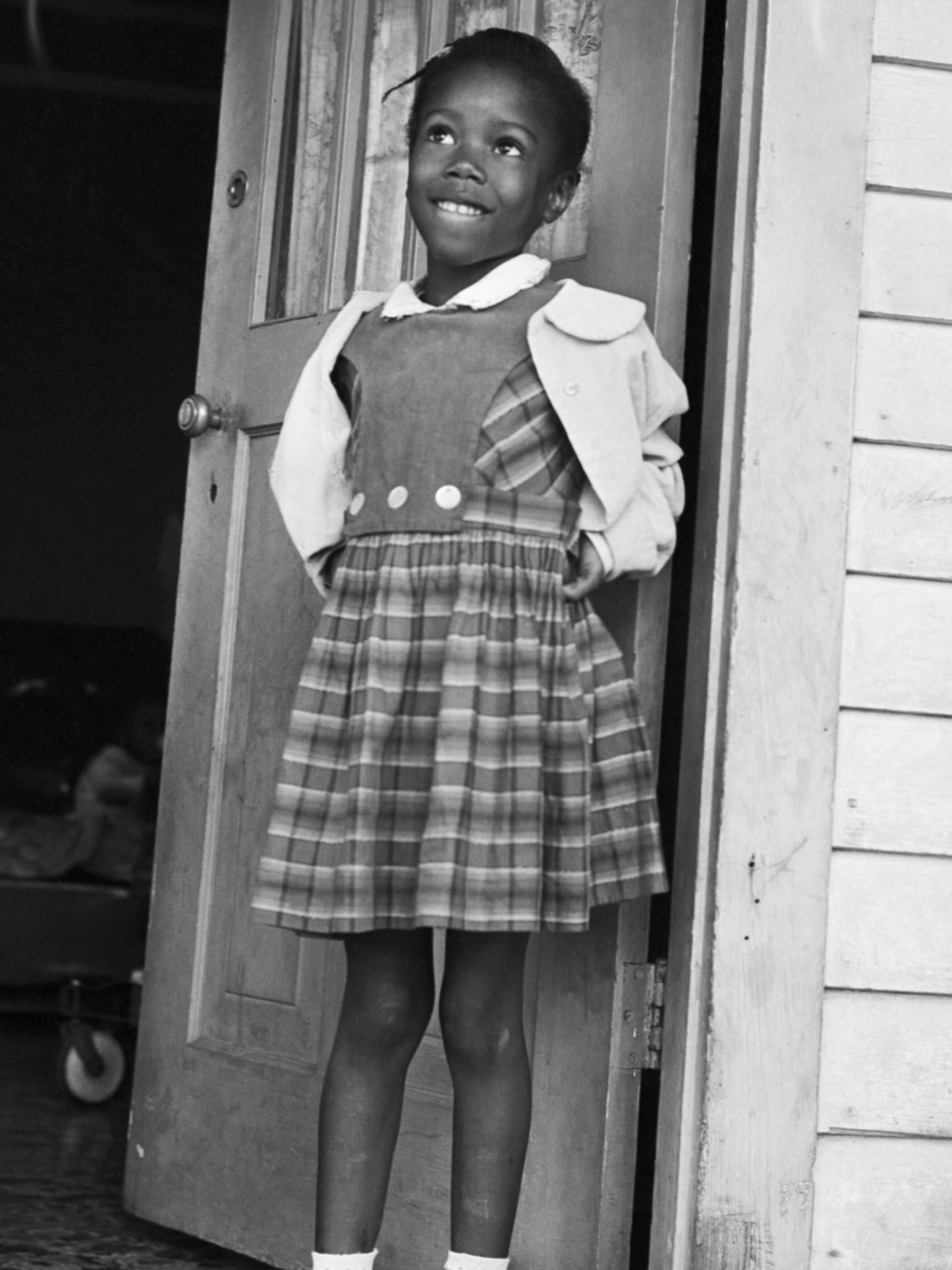
Six-year old Ruby Bridges
Courtesy of Engaging Congress
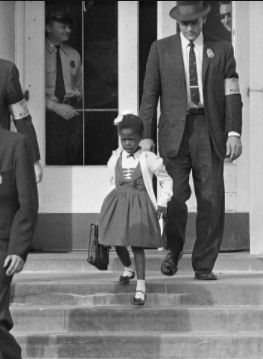
William Frantz Elementary School
Courtesy of Engaging Congress
Ruby Bridges was six years old when she desegregated William Frantz Elementary School in 1960. Although she was allowed to go to school, parents refused to let their children attend after Ruby transferred.
Norman Rockwell, a painter during The Civil Rights Movement, depicted Ruby walking with guards to school in a piece titled, "The Problem We All Live With."
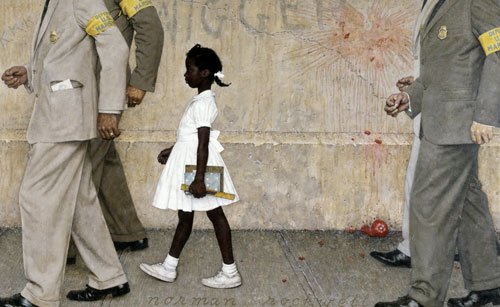
"The Problem we All Live With" by Norman Rockwell
Courtesy of LOOK

Poster used in March on Washington
Courtesy of the Library of Congress
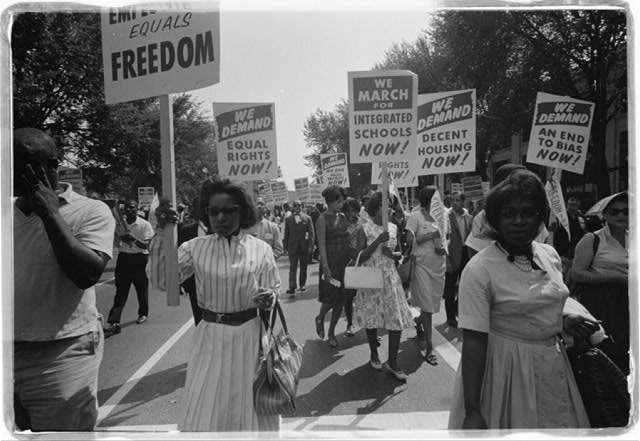
Civil rights march on Washington
Courtesy of the Library of Congress
As the years went by, the fight for equality intensified, igniting the Civil Rights March on Washington. Taking place in 1963, it was the largest civil rights protest of its time, the Brown case being one of its primary focuses. The march's purpose was to support the civil rights legislatures pending in Congress, but also to solidify the need for nondiscrimination.
"...after Brown v. Board of education, there was terrific progress. Tens of thousands of schools were integrated racially. During that time the gap between black and white achievement narrowed."
~Johnathan Kozol